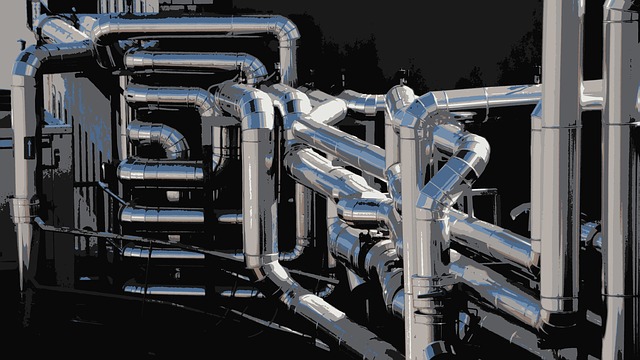
The Riteks team has more than 30 years of experience in serving the oil and gas industry, with an equal amount of experience working in high-performance, industrial paints and coatings. Standing at the intersection of these two business units is the area of pipeline coatings.
Whether you’re working in the recently proliferating practice of hydraulic fracturing or employing more traditional methods of oil and gas exploration, pipelines move raw product to refineries worldwide. The recent boom in exploration has opened up more miles of pipeline than ever, especially across North America. Pipelines, both new and old, require protection from elements and timely repair from damage.
Enemy #1: Corrosion
Corrosion is the biggest enemy of steel pipelines, and unmitigated corrosion can result in a host of problems, ranging from leaks to interruptions and even explosions. Thus, pipelines, which can typically run across state lines, are regulated at federal level for performance and safety with specific emphasis on cathodic protection.
A technique used to control the corrosion of a metal surface, cathodic protection in coatings connects the surface metal to a more easily corroded metal to be sacrificed, that will act as an anode.
The Evolution of High-Performance Pipeline Coatings
Pipeline coatings, as with other products in the chemical industry, have evolved over time. In the past, manufacturers at the plant or operators in the field would apply single-material products like coal tar. Just like we see in high-performance coatings targeted to other industries, the oil and gas industry now uses a variety of sophisticated materials such as epoxy primers and polymer-based products.
When we see these products used in tandem, they increase performance in a number of areas, like durability, thermal resistance, and insulation.
Mill Application versus Field Application
Piping manufacturers enjoy a greater level of control, both in the methods and efficiency of application and overall quality, through applying pipeline coatings in the mill, at the point of manufacture. In contrast, pipeline operators must apply coatings as repairs and maintenance schedules demand, due to a variety of environmental challenges and the amount of service provided by the pipeline itself. Considerations may include the temperature of the pipeline itself with respect to the environmental air temperature.
Due to their controlled environments, mill-applied pipeline coatings can take full advantage of the modern technologies available to achieve a variety of performance demands. Methods to apply pipeline coatings in these controlled environments can include crosshead extrusion, side extrusion, electrostatic spray, and plural-component spray.
Common Types of Pipeline Coatings
Liquid Epoxy: Applied in the field, liquid epoxies are formed by reacting epoxy resins with hardeners or catalysts, forming a hard coating that can be applied by brush, roller, or spray. Liquid epoxies are high-performing when applied to welds, fittings, and valves, or to repair short sections. These epoxies deliver excellent electrical, solvent, water penetration, and cathodic disbondment resistance.
Coal Tar Epoxy: Formulators make coal tar epoxies by replacing mineral fillers in liquid epoxies with semi-liquid coal tar pitch, curing the mixture with a reaction of resin and hardener, much like other liquid epoxies, forming a thermoset coating. Like liquid epoxies, coal tar epoxies deliver excellent electrical, water penetration, and cathodic disbondment resistance. They are also applied in the field.
Liquid Polyurethane: A hydrocarbon polymer formed by a reaction of a resin and hardener, polyurethane is chemically cured, fast-setting, and applied with other coating components via spray. Applied both at the manufacturing plant and in the field, liquid polyurethanes also deliver excellent electrical, water penetration, and cathodic disbondment resistance.
Fusion-Bonded Epoxy: Applied in both the field and at the mill, fusion-bonded epoxies are applied in a multi-step process that includes the surface preparation of the pipe with abrasive grit via centrifugal blasting, then oven-heating the cleaned pipe before sending it through a fluidized bed of epoxy particles (which can be controlled for specified thickness). Fusion-bonded epoxies may be applied in single coats or in multi-coat mechanisms to achieve excellent water penetration, electrical, cathodic disbondment, and solvent resistance.
Other common coatings include high-density polyethylene and polypropylene, composites like three-layer polyethylene and polypropylene for achieving other attributes like bendability, along with especially abrasion-resistant coating systems like polymer concrete and overcoating.
For Pipeline Coatings, Riteks Is Your Partner of Choice
Whether you’re an operator looking to keep your existing pipeline safe and productive, or a manufacturer optimizing coating blends for specific field challenges, Riteks is your partner of choice. With more than 30 years serving the oil and gas industry, as well as developing an array of high-performance coatings, we can help.